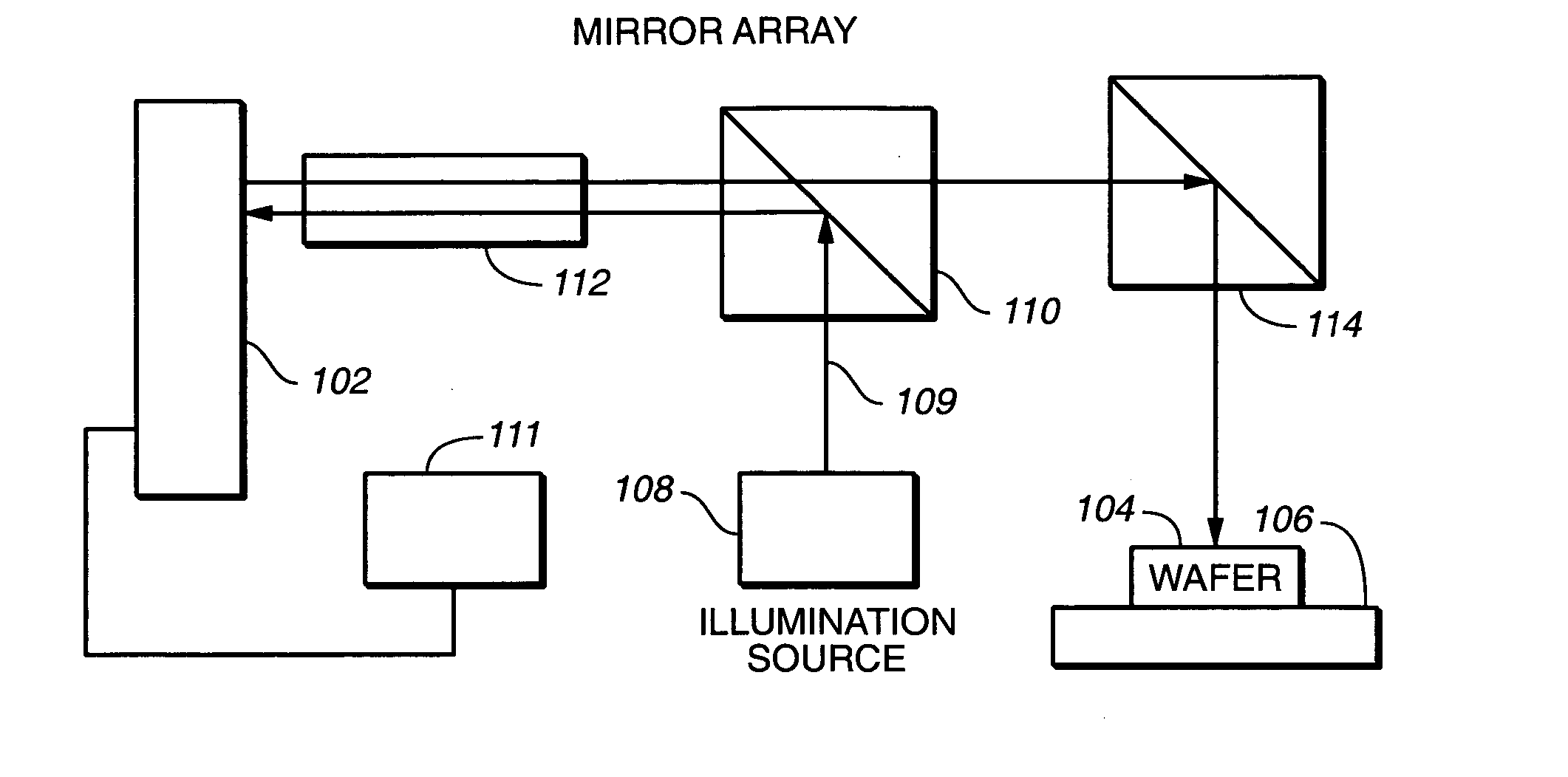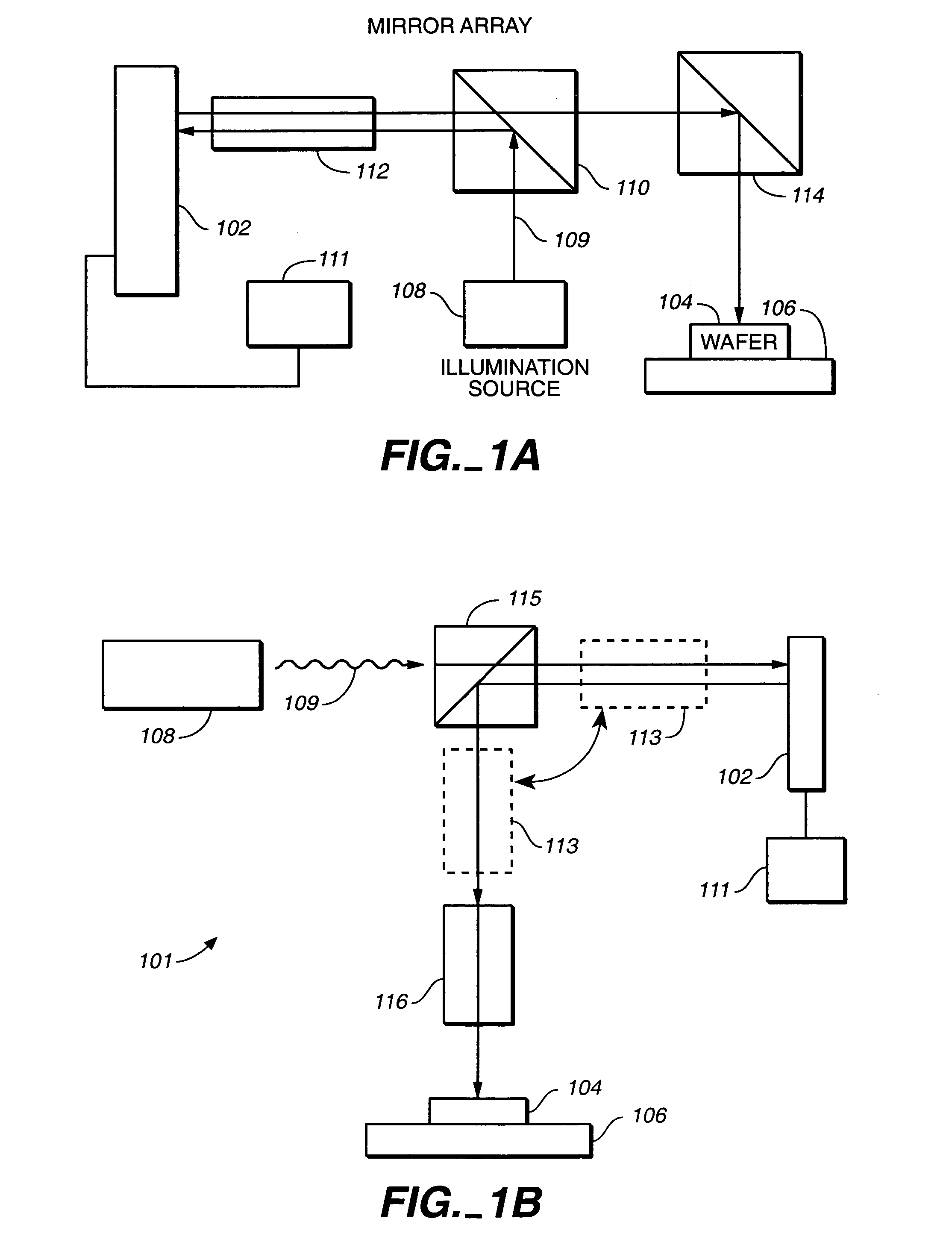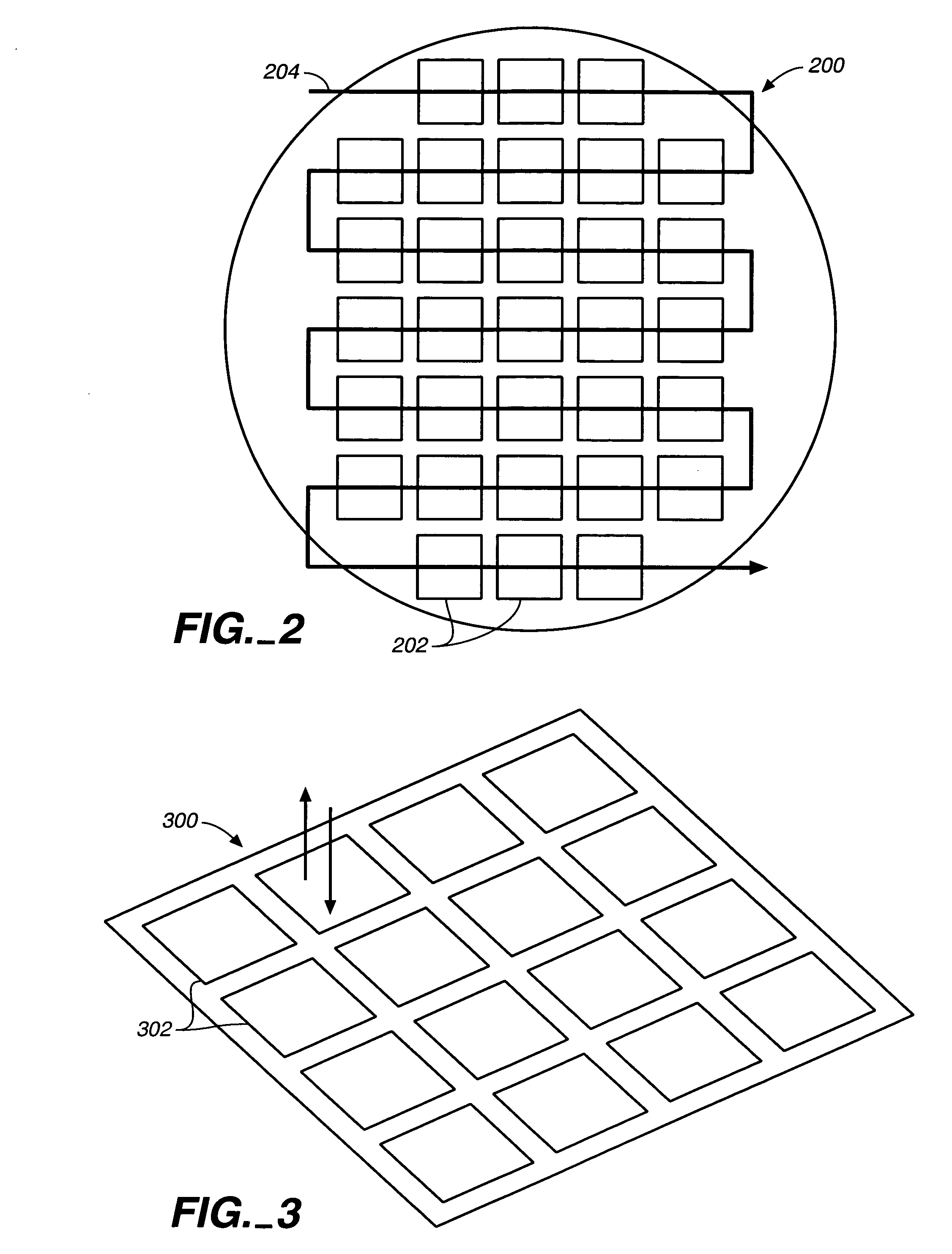Process and apparatus for generating a strong phase shift optical pattern for use in an optical direct write lithography process
a technology of phase shift and lithography, which is applied in the direction of photomechanical equipment, printers, instruments, etc., can solve the problems of affecting the patterning effect of features using conventional photolithography, affecting the patterning effect of features,
- Summary
- Abstract
- Description
- Claims
- Application Information
AI Technical Summary
Benefits of technology
Problems solved by technology
Method used
Image
Examples
Embodiment Construction
[0033] The present invention has been particularly shown and described with respect to certain embodiments and specific features thereof. The embodiments set forth hereinbelow are to be taken as illustrative rather than limiting. It should be readily apparent to those of ordinary skill in the art that various changes and modifications in form and detail may be made without departing from the spirit and scope of the invention.
[0034] In the following detailed description, fabrication methods and apparatus for implementing direct write optical lithography systems is set forth. Such systems and methods use programmable optical mirrors in a maskless lithography system to form desired optical patterns on a substrate. The maskless direct-write lithography system provided uses an array of mirrors configured to operate in a torsional (i.e., tilted) mode, a piston-displacement (“piston”) mode, or capable of operating in both modes. A scanning apparatus is provided that uses the mirror array ...
PUM
| Property | Measurement | Unit |
|---|---|---|
| width | aaaaa | aaaaa |
| width | aaaaa | aaaaa |
| width | aaaaa | aaaaa |
Abstract
Description
Claims
Application Information
 Login to View More
Login to View More - R&D
- Intellectual Property
- Life Sciences
- Materials
- Tech Scout
- Unparalleled Data Quality
- Higher Quality Content
- 60% Fewer Hallucinations
Browse by: Latest US Patents, China's latest patents, Technical Efficacy Thesaurus, Application Domain, Technology Topic, Popular Technical Reports.
© 2025 PatSnap. All rights reserved.Legal|Privacy policy|Modern Slavery Act Transparency Statement|Sitemap|About US| Contact US: help@patsnap.com



